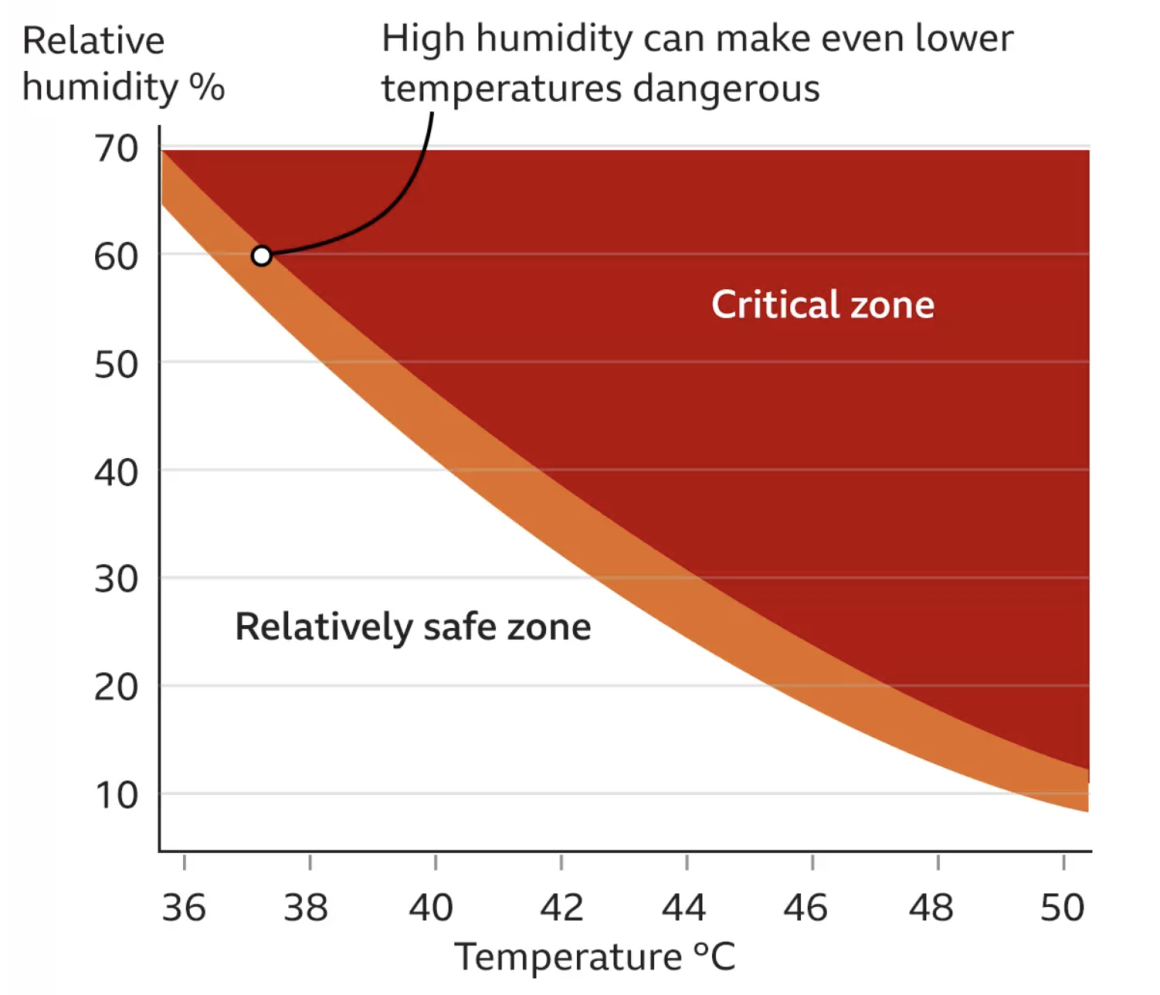Record-breaking heatwaves are being recorded worldwide as Qatar averages temperatures ranging from 32-41 degrees Celsius this summer.
Research from BBC indicated that too much heat and humidity can cause physiological changes, including memory difficulties.
“I think it’s essential to realise it’s no longer just distant or far away from us or something in the future. We are really seeing it now,” said Prof Lizzie Kendon from the Met Office to the BBC.
So what does the changing climate mean for our bodies and our health? Using 21 degrees Celsius as the baseline, and 41 degrees Celsius as the maximum temperature, an anecdotal study was conducted where different physiological measures were tested.
The results
“Blood pressure works, heart rate and all of the physiological signals indicate a spiffing shape,” Prof Bailey, a lead researcher of the experiment, commented on someone at room temperature.
But as the temperature approached and exceeded 37 degrees Celsius – the core temperature around internal organs – noticeable changes started.

It started slowly. The subject turned redder, and blood vessels near the skin’s surface opened up, making it easier for warm blood to lose heat into the air.
The body responds with sweat -a crucial way the body pushes heat out to the skin’s surface. Through evaporation, that heat dissipates.
Difficulty begins
As the temperature approached 40 degrees Celsius, the heat became drastically noticeable.
“It’s not linear, it’s exponential. Five degrees centigrade [more] doesn’t sound much, but it really is physiologically so much more of a challenge,” said Prof Bailey.
As the body heats up, blood vessels dilate, lowering blood pressure, making a person feel dizzy and sick. Still, there is more demand for blood to circulate, so the brain wants more volume in this low-pressure circulation.
This puts an extra strain on the heart. If flow suddenly plummets, it can cause damage too. This is why there is an increase in deaths from heart attacks and strokes when temperatures soar.
And as the blood heads to the skin, the brain loses out. Blood flow goes down, and so does short-term memory.
Don’t forget about humidity
Too often, discussions about heat have also got to factor in humidity.
Sweating alone isn’t enough – it’s only when the sweat evaporates into the air that it gives us that cooling effect. When there are high levels of water already in the air, it’s harder for sweat to evaporate.
To understand the combined effects of the two, a team at Pennsylvania State University in the US tested a bunch of healthy young adults at different combinations of temperature and humidity. They were looking for the moment when core body temperature started to rise rapidly.
“That’s when it becomes dangerous. Our core temperature starts to rise, which can lead to organ failure,” says researcher Rachel Cottle.
And that danger point is reached at lower temperatures when the humidity is high.
The concern is that heatwaves are not only becoming more frequent, longer in duration, and more severe, but they’re becoming more humid too, says Cottle.
She points out that last year, India and Pakistan were hit by a severe heatwaves with both critical temperatures and high humidity. “It’s definitely a ‘now’ problem, not a future problem,” she says.
What is too much, then?
The body is built to operate at a core temperature of about 37 degrees Celsius and humans become more light-headed and prone to fainting as the core rises closer to 40 degrees Celsius.
High core temperatures damage our body’s tissues, such as the heart muscle and the brain. Eventually, this becomes deadly.
“Once the core temperature rises to around about 41-42 degrees centigrade, we start to see really, really significant problems, and if not treated, the individual will actually die as a result, succumbing to hyperthermia,” says Prof Bailey.
This phenomenon – heat stroke – is a medical emergency.
People’s ability to cope with the heat varies, but age and ill health can make us far more vulnerable, and temperatures may be dangerous at a different stage in life.







